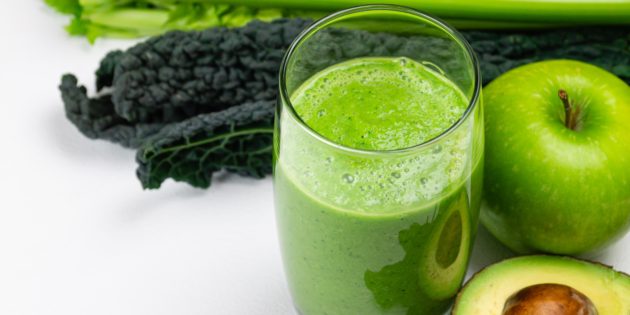My grandmother told me that she grew up eating vegetables from the family’s garden. Everything was organic, although they didn’t need to label it that way. There was no difference between conventional and organic. Vegetables came from the garden and there were no pesticides used. It was as simple as that.
Today it’s different. As much as I wish I could have a full organic vegetable supply from a backyard garden, it’s not an option for me at this time. I have choices to make in the grocery store, just like everyone else. Many of the choices I make have to do supporting good health.
Are we exposed to toxins every day?
We are exposed to more toxins today than ever before. The US Environmental Protection Agency (EPA) estimates that there are more than 87,000 chemicals currently in widespread use, 62,000 of which are small enough to pass through cell membranes.
In addition, the Environmental Working Group (EWG) did a study testing umbilical cord blood. An average of 287 chemicals were detected: 180 of these have the potential to cause cancer in humans or animals, 217 are toxic to the brain and nervous system, and 208 can cause birth defects or abnormal development in animal tests.
Let’s talk about detoxification
One analogy that I like to give about detoxification is that we can think of the body like a bucket. The more that we are exposed to, the more the bucket fills up. If the bucket cannot drain, then it will overflow. We can drain the bucket by decreasing or eliminating our toxic exposures. We can also drain the bucket by doing things to help our body process the toxins that we are exposed to. However, if the bucket overflows then this can represent symptoms that we feel due an excess of toxic exposures and a lifestyle that may not be supportive of overall health.
Every day, our liver, kidneys, large intestine, lymphatic system and sweat glands work to decrease the buildup of these toxins. The body does this through detoxification, which is the body’s process of making them less harmful. There are pathways in the body that are responsible for changing these toxins into chemical compounds that are easier to eliminate.
There are many things that I like to do to help keep myself healthy and decrease toxic exposure. We can be exposed to toxins in a number of different ways. This can be from new construction, carpet chemicals that off gas into the air, paint, household cleaners and even personal hygiene products (like lotions and make-up). One of the most common exposures is from farming chemicals: pesticides, herbicides and fertilizers.
What are the “Dirty Dozen” and “Clean 15”?
If I’m not able to purchase everything organic at the grocery store, then it’s helpful to check the “Dirty Dozen” and “Clean 15” lists from the EWG. The foods listed on the “Dirty Dozen” list have the highest levels of pesticides and we can prioritize buying these organic. The foods listed on the “Clean 15” list have the least pesticides. These two lists are updated every year.
What foods can help with detoxing?
We can use this information to make choices and help decrease toxic burden. We can also choose to consume foods that are high in phytonutrients and are helpful for supporting the detoxification processes in our bodies.
Here are a few of my favorites:
- Green tea
- Berries
- Garlic
- Onion
- Beets
- Watercress
- Pomegranate
- High quality olive oil
- Cruciferous vegetables
Two are worth mentioning in particular:
- Broccoli: All parts of broccoli are beneficial to eat! Broccoli florets have high concentrations of amino acids and detoxifying phytonutrients. The leaves are high in carotenoids, vitamins E and K and antioxidant activity. Also, the stems have detoxifying enzymes.
- Curcumin: This is found in the spice turmeric (which is in some curry dishes) and it does many beneficial things. It helps to prevent DNA damage by toxins, radiation and other environmental factors. It can also help to increase enzymes needed for detoxification in the liver.
If that’s not enough motivation to eat more fresh produce, it’s interesting to note that a study was done that shows eating fruit and vegetables can also lead to increased happiness, life satisfaction and well-being!
Reference:
- Liu, M.; Zhang, L.; Ser, S.L.; Cumming, J.R.; Ku, K.-M. Comparative Phytonutrient Analysis of Broccoli By-Products: The Potentials for Broccoli By-Product Utilization. Molecules 2018, 23, 900.
- Mujcic R, J Oswald A. Evolution of Well-Being and Happiness After Increases in Consumption of Fruit and Vegetables. Am J Public Health. 2016 Aug;106(8):1504-10. doi: 10.2105/AJPH.2016.303260
Photo Credit: ID 184429556 © Nongnuch Polyiam Dreamstime.com





